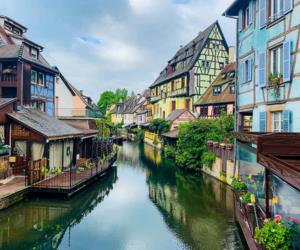Not long ago, I found myself standing on the summit of Island Peak, breathless—not just from the altitude, but from the view that stretched across the sky. The Island Peak Climb Nepal had been on our bucket list for years, and when we finally made it to the top at 6,189 meters, it was more than a goal achieved—it was a dream lived. We had trekked for days through forests, across rivers, and up rocky trails to reach this point. And every step was worth it.
文章重點
Where Is Island Peak?
sland Peak, also called Imja Tse, sits in the heart of Nepal’s Khumbu region, southeast of Mount Everest. It’s named “Island Peak” because it rises out of the icy landscape like an island in a sea of glaciers. From its summit, you can see Lhotse, Makalu, Baruntse, and Ama Dablam—towering giants that leave you feeling tiny, but deeply alive.
How the Journey Begins
Our adventure started with the classic flight into Lukla (2,860m)—a thrilling takeoff into the mountains. From there, we trekked through charming Sherpa villages like Namche Bazaar, Tengboche, and Dingboche, gradually adjusting to the rising altitude. The trail was filled with prayer flags, swinging bridges, yak trains, and the quiet rhythm of footsteps on stone.
We followed part of the Everest Base Camp trail before turning toward Chhukhung, the final village before Island Peak Base Camp. The trek to base camp took us around 10–12 days, covering over 100 kilometers, depending on the acclimatization schedule. Each day brought a different terrain—dense pine forests, open valleys, and high alpine ridges.
Reaching Base Camp
Island Peak Base Camp lies at around 5,100 meters (16,732 feet). We set up our tents there, surrounded by glaciers and ridgelines that sparkled in the sun. Before summit day, we had a training session to learn how to use crampons, harnesses, and fixed ropes. Though we weren’t expert climbers, the skills we learned gave us confidence.
The base camp night was quiet, with only the wind and the sound of ice cracking in the distance. Sleep was light, as the next day was summit day.
Summit Push: Climbing Into the Sky
We started our summit push around 1:00 a.m., guided by headlamps and stars. The early trail was steep and rocky. Higher up, we stepped onto the glacier—crunchy and cold. The final challenge was a 100-meter ice wall just below the summit. Using fixed ropes and a jumar, we climbed one step at a time, ice axe in hand, breathing heavily but moving forward.
The summit was small, with just enough room to stand and celebrate. But the view was massive. Peaks as far as the eye could see, snow blowing across ridges, and sunlight painting the mountains gold. We stood there, not saying much—just taking it all in.
What Makes It Special?
Island Peak is not Everest, but it feels wild and remote. It offers more than a trek—it gives a taste of mountaineering without being overly technical. What makes it special is the mix of adventure and beauty. You trek through cultural villages, learn climbing skills, and finish with a real Himalayan summit.
One word that comes to mind is “boundless.” That’s how it feels—open, limitless, and full of discovery. It’s more than just reaching a high point. It’s about what you learn on the way up and who you become when you reach the top.
Tips for Future Climbers
Acclimatize properly. Take rest days and ascend gradually.
Stay hydrated. Drink lots of water, especially at high altitudes.
Layer your clothing. Summit morning is extremely cold.
Listen to your guides. Their advice is gold.
Keep a steady pace. It’s not a race—it’s a journey.
Final Thoughts
Looking back, Island Peak Climb Nepal was one of the most thrilling experiences I’ve ever had. It gave us a new respect for the mountains and a deeper connection to ourselves. If you’re someone who’s trekked before and wants to take the next big step, Island Peak offers the perfect challenge.
You don’t have to be a seasoned mountaineer. You just need passion, preparation, and the courage to go a little higher. And when you stand on that summit, breathing the thin air and soaking in the endless view, you’ll understand why we climb.





